Fred Hylands was born in 1872, in or near Fort Wayne, Indiana, to locomotive engineer Charles Hylands and his wife Mary Whitney, along with his younger sister Ethel "Ettie" (1875). The 1880 census showed the family living in Fort Wayne. Very little was found on Fred's musical training or upbringing, but it is clear that he likely received some piano instruction, either privately or possibly in the public school system. In the mid-1880s, Charles decided to try an enterprise that kept him closer to home, and opened a grocery store in Fort Wayne that appears to have also included, or was expanded into, a saloon. It was likely here that Fred got even more musical training simply listening to itinerant pianists play the hits or trends of the day, and emulating them after the fact. Still, the fact that he and his sister were placed on stage as juveniles in the early 1880s, billed as the "Infant Prodigies," further suggests some formal training in his background.
While still in his teens, Fred toured the area between the Illinois River and Ohio Valley with his younger sister. A typical notice for them was found in the Defiance [Ohio] County Express from September 3, 1887, when Fred was just 15 years of age and Ethel was 12:
There will be an instrumental and vocal concert and dramatic entertainment given at Myers' Opera House Saturday evening, September l0th, 1887, by Fred. and Ettie Hylands, supported by a company of twenty-five artists. The play is entitled "Grandpa's Birthday," and promises to be a good one. The manager, Mr. Hylands, is a very clever young gentleman, possessed of very winning ways, and will make friends wherever ho goes. The play is of the highest order, and cannot fail to please.
When he reached his twenties, Fred and his family relocated to Chicago, Illinois. It was there that Mary Hylands died in February of 1893. Ethel Hylands was married a few months later, the same time as the Columbian Exposition,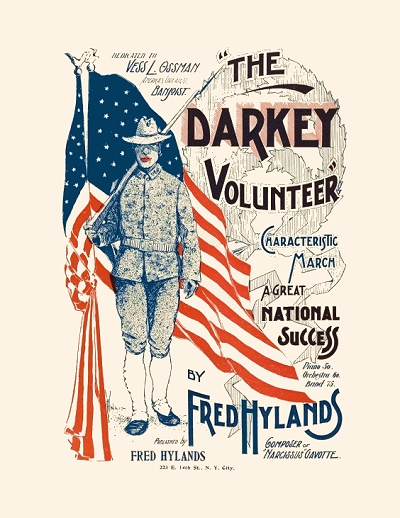 or World's Fair, that commanded so much of the attention of the country, and where ragtime was allegedly first heard, even if only in the entertainment district. Given his propensity for the piano, it is possible that Fred played somewhere in the area at this time as well. He remained in Chicago for at least the next two years. On September 5, 1895, Fred married singer and actress Maria Francis Stevens. The following year, Hylands decided to relocate to where the action was in the burgeoning field of ragtime music, New York City. His widowed father followed along with the couple, having gone back to his job as a railroad engineer.
or World's Fair, that commanded so much of the attention of the country, and where ragtime was allegedly first heard, even if only in the entertainment district. Given his propensity for the piano, it is possible that Fred played somewhere in the area at this time as well. He remained in Chicago for at least the next two years. On September 5, 1895, Fred married singer and actress Maria Francis Stevens. The following year, Hylands decided to relocate to where the action was in the burgeoning field of ragtime music, New York City. His widowed father followed along with the couple, having gone back to his job as a railroad engineer.
 or World's Fair, that commanded so much of the attention of the country, and where ragtime was allegedly first heard, even if only in the entertainment district. Given his propensity for the piano, it is possible that Fred played somewhere in the area at this time as well. He remained in Chicago for at least the next two years. On September 5, 1895, Fred married singer and actress Maria Francis Stevens. The following year, Hylands decided to relocate to where the action was in the burgeoning field of ragtime music, New York City. His widowed father followed along with the couple, having gone back to his job as a railroad engineer.
or World's Fair, that commanded so much of the attention of the country, and where ragtime was allegedly first heard, even if only in the entertainment district. Given his propensity for the piano, it is possible that Fred played somewhere in the area at this time as well. He remained in Chicago for at least the next two years. On September 5, 1895, Fred married singer and actress Maria Francis Stevens. The following year, Hylands decided to relocate to where the action was in the burgeoning field of ragtime music, New York City. His widowed father followed along with the couple, having gone back to his job as a railroad engineer.It did not take long for Fred to get involved with the active crowd of musicians who were also among the first recording pioneers in the field of popular music. In the mid-1890s, cylinders were just coming into their own as a viable means for bringing more music into the home, and discs were not far behind. The banjo was among the most easily recorded of the melodic instruments, but they often benefited from the richness of a piano accompaniment, even though it would be some time before engineers could effectively record the latter as a solo instrument. So Fred found himself in the late 1890s playing piano on Columbia brown wax cylinders with banjos and other instruments, and especially for vocalists.
Recording logs were not always complete, and cylinders did not have the same surface area that allowed for a detailed label as did flat discs, so at least some of the records that Hylands can be heard on may be ascertained largely by speculation, style, and certain recording dates. It is notable that one of his first published compositions, The Darkey Volunteer, was dedicated on the cover to banjoist Vess L. Ossman, one of the most prolific artists playing popular music at a time when a recording session meant playing into a dozen or so machines at a time for twenty to thirty takes, since cylinders were difficult to duplicate before 1903 or so.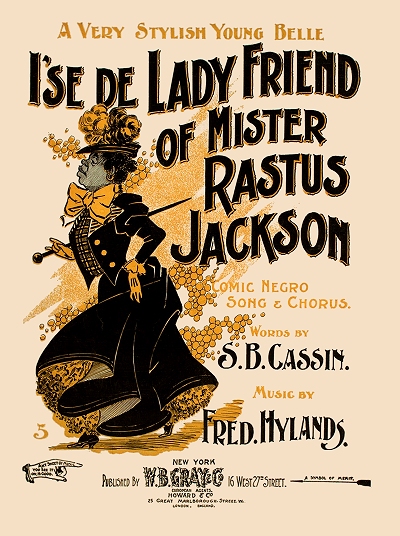 While Ossman had started out as an Edison artist, he was recording with Columbia by 1898. It is likely that even if Fred did not record with Vess that they played in live venues somewhere in New York or central New Jersey. It is also an indicator that he ran with a crowd that included Frank P. Banta, who frequently recorded with Ossman. Both Banta and Hylands, along with Theodore Morse, were mentioned in the music trades from time to time as among the best of the early ragtime pianists and as solid accompanists.
While Ossman had started out as an Edison artist, he was recording with Columbia by 1898. It is likely that even if Fred did not record with Vess that they played in live venues somewhere in New York or central New Jersey. It is also an indicator that he ran with a crowd that included Frank P. Banta, who frequently recorded with Ossman. Both Banta and Hylands, along with Theodore Morse, were mentioned in the music trades from time to time as among the best of the early ragtime pianists and as solid accompanists.
 While Ossman had started out as an Edison artist, he was recording with Columbia by 1898. It is likely that even if Fred did not record with Vess that they played in live venues somewhere in New York or central New Jersey. It is also an indicator that he ran with a crowd that included Frank P. Banta, who frequently recorded with Ossman. Both Banta and Hylands, along with Theodore Morse, were mentioned in the music trades from time to time as among the best of the early ragtime pianists and as solid accompanists.
While Ossman had started out as an Edison artist, he was recording with Columbia by 1898. It is likely that even if Fred did not record with Vess that they played in live venues somewhere in New York or central New Jersey. It is also an indicator that he ran with a crowd that included Frank P. Banta, who frequently recorded with Ossman. Both Banta and Hylands, along with Theodore Morse, were mentioned in the music trades from time to time as among the best of the early ragtime pianists and as solid accompanists.In addition to recording, Fred applied his talents to not only composing, but directing comic operas and early musical theater. With newspaper writer James Phelan Cuddy he opened a short-lived booking agency and press bureau in Union Square in 1898. In 1897 Fred had gained steady employment with the Keith, Pastor and Proctor theaters of New York, sometimes going on the road to Pittsburgh, Pennsylvania, for a theater chain there. It was at Tony Pastor's theater where the dynamic Mike Bernard held forth from the pit, as well as his mentor and predecessor Ben Harney, so it is likely Fred knew them as well. Two other musicians he became associated with were pioneer recording vocalist and stage minstrel Leonard G. "Len" Spencer and composer/singer Harry W. Yeager. Fred had accompanied Spencer on several occasions, and possibly Yeager. His recordings with Spencer remain among the better examples of Columbia's early ragtime and popular song output, all very fresh and dynamic. Hylands and Yeager also had been doing some composing during this time.
In March of 1899 the trio, along with silent partner Rollin C. Wooster, formed their own publishing company of Hylands, Spencer and Yeager, which would soon be located at 33 West 27th Street in Manhattan. One of the slogans included in their decorative footer [reportedly designed by Spencer] was "Here Hot Hits Happen." They evidently created it with the intention of issuing music by themselves and their circle of close friends. Among them was composer and future publisher J. Fred Helf, who contributed a handful of his early songs to the firm. Another contributor was Nathan Bivins, known for several "coon" songs, a popular genre at that time. The "Tin Pan Alley" paradigm, and indeed, the 28th Street, Manhattan, collection of publishers was not quite yet born, but there was nonetheless a growing competition as ragtime and popular songs were quickly making the rounds around the country. As it was, they managed to turn out a few good tunes, some by Hylands, during their short run.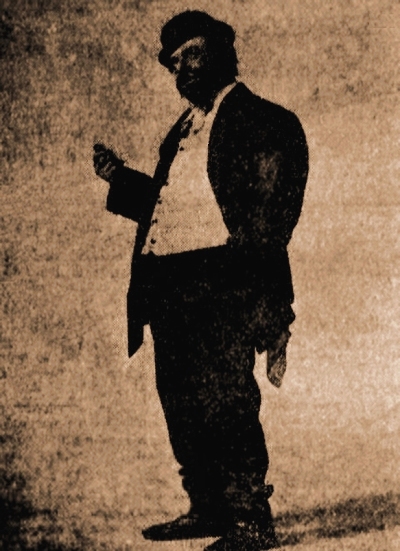 Two other associates included Roger Harding and Will J. Hardman, both of whom were engaged in vaudeville and musical theatre in New York, and composed tunes with Fred. But, as many similarly-minded musicians would discover over the next decade, running a publishing firm with minimal output meant limited revenue to sustain that firm, and trying to expand while still engaged in performance was often too time consuming.
Two other associates included Roger Harding and Will J. Hardman, both of whom were engaged in vaudeville and musical theatre in New York, and composed tunes with Fred. But, as many similarly-minded musicians would discover over the next decade, running a publishing firm with minimal output meant limited revenue to sustain that firm, and trying to expand while still engaged in performance was often too time consuming.
 Two other associates included Roger Harding and Will J. Hardman, both of whom were engaged in vaudeville and musical theatre in New York, and composed tunes with Fred. But, as many similarly-minded musicians would discover over the next decade, running a publishing firm with minimal output meant limited revenue to sustain that firm, and trying to expand while still engaged in performance was often too time consuming.
Two other associates included Roger Harding and Will J. Hardman, both of whom were engaged in vaudeville and musical theatre in New York, and composed tunes with Fred. But, as many similarly-minded musicians would discover over the next decade, running a publishing firm with minimal output meant limited revenue to sustain that firm, and trying to expand while still engaged in performance was often too time consuming.In late 1900, the partnership was dissolved. As was stated in the Music Trade Review of October 27, 1900: "The name of the above firm will hereafter be known as the Fred Hylands Co., Mr. Spencer and Mr. Yeager coming to the conclusion that Fred Hylands was the only member of said firm who was actively engaged in the welfare of said business, also cognizant of the fact that said Hylands was more extensively known throughout the theatrical profession, etc., etc." Fred's company was soon absorbed into a conglomerate of other small firms known as the Music Publisher's Supply Company. This allowed a different management company to take care of printing, sales and distribution, while giving Hylands and his friends more time to pursue their other musical interests.
The 1900 enumeration showed Frederick, Marie and Charles residing in Manhattan, with Frederick listed as a musician and Marie as an actress. Charles, now in his early fifties, was still engaged as a locomotive engineer. Fred spent most of the summer of 1900 performing at B.F. Keith's Boston House, coming back to play at Keith's Union Square location in New York for the fall and winter, during which time he had been dealing with the changes in his publishing company. Descriptions of both Fred and his playing from this period were both oversized in content. He was well-liked in the vaudeville and recording communities for his playing and personality. Somewhat tall and weighing an average of 250 or more pounds, Hylands also often dominated a room just by walking into it. So he had very few issues when managing shows, or simply playing for vaudeville acts. There were also no "show-biz" stories concerning anything except innocent antics, unlike a few of his peers who regularly made the papers for outrageous or abhorrent behaviors. However, his size and lifestyle would eventually catch up with him.
In mid-1901 Fred sold off some of his catalog to small-time publishers and musicians John Aldrich and Harry Linton. Not long after that announcement in late 1901 he joined up with them for another short-lived firm, this time going to the back of the letterhead, formed as Aldrich, Linton and Hylands. At the same time he also became a representative for recently established publisher Harry Von Tilzer, employed to "look after the new firm's interests on the road."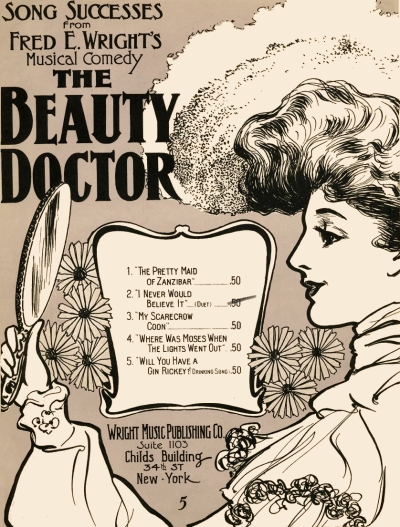 By early 1902 Harry had bought the accumulative catalogs of Hyland's former and current firms, with many of the number rebranded for sale under Von Tilzer's logo. Fred was busy in other regards as well, a member of the vaudeville branch of the White Rats Actors' Union, and a founding member of another actors' union known as the Knights of the Footlights, which unfortunately died on the stage in late 1902 before it got very far.
By early 1902 Harry had bought the accumulative catalogs of Hyland's former and current firms, with many of the number rebranded for sale under Von Tilzer's logo. Fred was busy in other regards as well, a member of the vaudeville branch of the White Rats Actors' Union, and a founding member of another actors' union known as the Knights of the Footlights, which unfortunately died on the stage in late 1902 before it got very far.
 By early 1902 Harry had bought the accumulative catalogs of Hyland's former and current firms, with many of the number rebranded for sale under Von Tilzer's logo. Fred was busy in other regards as well, a member of the vaudeville branch of the White Rats Actors' Union, and a founding member of another actors' union known as the Knights of the Footlights, which unfortunately died on the stage in late 1902 before it got very far.
By early 1902 Harry had bought the accumulative catalogs of Hyland's former and current firms, with many of the number rebranded for sale under Von Tilzer's logo. Fred was busy in other regards as well, a member of the vaudeville branch of the White Rats Actors' Union, and a founding member of another actors' union known as the Knights of the Footlights, which unfortunately died on the stage in late 1902 before it got very far.Over the next few years, Fred and Marie hit the boards in vaudeville both as performers and musical directors for a number productions throughout the eastern half of the country. They were seen often in the vaudeville trade papers, including The Billboard, but otherwise rarely made the news. In 1904 Fred had a song titled The Japanese Patrol interpolated into a couple of different shows. Possibly encouraged by this, he wrote his own musical comedy in three acts titled The Yankee Doodle Girl. Given that it appeared just a few months after the highly successful musical Little Johnny Jones written by George M. Cohan, and featuring the perpetual hit song The Yankee Doodle Boy, it is possible if not likely that Hyland's musical was a response at the very least. Featuring only a handful of songs, however, it is hard to refer to it as a full-fledged musical. The production did not fare any better than a one week run in 1905 before it went out briefly on the road, dying quickly in the shadow of the Cohan play, and resulting in a substantial financial loss for the composer.
However, during his tenure as the musical director of the Canobie Lake Stock Company in Salem, New Hampshire, for the summers of 1905 and 1906, Fred wrote a mildly more successful piece called The Beauty Doctor, which ran two weeks on Broadway in the fall of 1905 before heading out for a run around New England. He toured with a revised edition in 1906, and another in 1907, personally conducting most of the performances, and Marie took the stage as its female star. Around that time he also took on the show The Rajah of Bong with a similarly moderate success on the road. The Hylands continued to tour vaudeville together through 1908 as well.
In 1909 Fred signed a deal with the Aerons Theater Circuit to provide acts that came exclusively from the White Rats Union, and included a relatively new attraction, that of two reels of motion pictures (around 22 minutes in total) for each show in small to medium towns throughout the East. The 1910 census, taken in Manhattan, showed Fred lodging in Manhattan and listed as a theater musician. Marie was not found in the same listing, although they were still married, so she may have been off in a traveling production. Later in the year he got a position with one of William Fox's vaudeville theaters in New York down on 14th street, working as the musical director there over the next two seasons, and in charge of organizing orchestras for some other Fox houses in New York.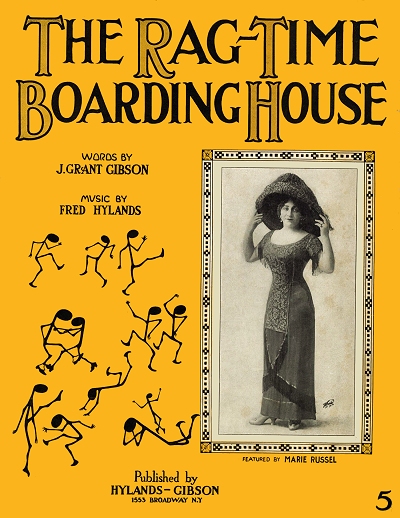 In his continuing role with the White Rats Actor's Union, he also continued to advocate for them, making sure that members kept gainfully employed with Fox. However, this often proved to be a challenge as Fox had some level of disregard for unions, and Hylands parted ways with him in 1912.
In his continuing role with the White Rats Actor's Union, he also continued to advocate for them, making sure that members kept gainfully employed with Fox. However, this often proved to be a challenge as Fox had some level of disregard for unions, and Hylands parted ways with him in 1912.
 In his continuing role with the White Rats Actor's Union, he also continued to advocate for them, making sure that members kept gainfully employed with Fox. However, this often proved to be a challenge as Fox had some level of disregard for unions, and Hylands parted ways with him in 1912.
In his continuing role with the White Rats Actor's Union, he also continued to advocate for them, making sure that members kept gainfully employed with Fox. However, this often proved to be a challenge as Fox had some level of disregard for unions, and Hylands parted ways with him in 1912.After a number of years focusing on managing shows, Fred had got back into writing music in 1911. His moderate output over the next couple of years produced a few good numbers, including The Bootblack Rag, a 1911 song, The Lightning Rag composed with prolific lyricist Nat Vincent, and the relatively popular The Ragtime Boarding House with another busy lyric writer, J. Grant Gibson. Most of his numbers were incorporated into various shows at Fox vaudeville houses. Gibson had worked with him on stage and behind the scenes since around 1905 on some of Hyland's vaudeville productions on the road, including the Canobie Lake Park productions and The Beauty Doctor. The two of them formed a short-lived publishing company as well, but most editions of their works, including The Ragtime Boarding House were soon bought and released by other firms. In 1913 Hylands composed one more piece with Gibson; the comic You've Got the Rag-I-Ri-Tis, lamenting the nearly incurable disease of ragtime that had permeated the musical and cultural world for over a decade at that time. That was the end of his known output.
In 1912 Fred teamed with Wilbur Held for an extensive vaudeville tour through part of the eastern United States. They proved successful enough that the pair arranged to go to England in the summer of 1913. However, even before he left his friends had suspected that not all was well with Hylands. He had complained of frequent bouts with appendicitis, albeit it might have been a malady with his liver or gall bladder as well. But the most pervasive issue, likely tied to his bulk, was that of diabetes. Even though Fred maintained an exterior of joviality and good spirits, he was suffering pain that was making it more difficult to take the stage. Nonetheless, he and Held, along with Marie, sailed for her native England in late July. Initially engaged for just a few weeks, their contract was reportedly soon extended to as long as two years.
It appeared to be a combination of appendicitis or a similar ailment complicated by diabetes and the difficulty of operating on his by-then 300 pound bulk that took the life of Frederick Hylands in Lancashire, England, on October 14, 1913, at age 41. Two weeks later, Marie brought her husband back to New York for burial, and to attend ceremonies held by the White Rats Actors Union and other groups honoring him for his contributions to the stage. Even two years later on the anniversary of his death, Marie, who after a while had continued her acting and singing career, saw fit to put a notice of mourning in memory of her late husband, published in Variety. Soon forgotten, however, little is heard of Fred's music today, in part because of the popularity of a number of other songs that have transcended the ragtime era, in addition to his lack of piano ragtime. Just the same, Hylands was a force for the rights of the stage artist, and an artist himself.
Thanks go in part to Ramona S. Baker, a young California-based researcher who is interested in early recording artists, and who suggested this biography while asking for assistance in finding out more about the somewhat obscure Hylands. She also contributed a couple of additional items to his story and the song list. The majority of the text was derived from official records and newspaper accounts. You can check out Ramona's writing and research at http://theoldrecordgal.blogspot.com/.
 Compositions
Compositions